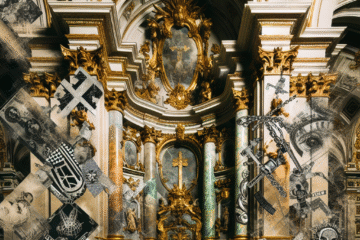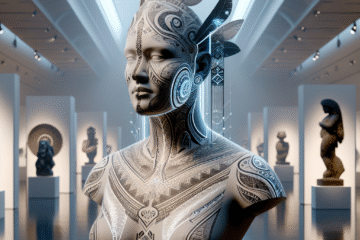I. Introduction
Developing one’s own drawing style is an essential aspect of becoming a successful artist. A personal style sets you apart from other artists and allows you to create truly unique and distinctive pieces of art. However, many artists struggle with finding and developing their own style. In this article, we will explore the importance of developing a personal drawing style, and provide an overview of the main points that will be covered in order to guide you on your journey towards creating a unique and recognizable style.
Why is developing a personal drawing style important?
Having a personal style is important for several reasons. Firstly, it allows you to create art that is truly unique and reflective of your own artistic vision. This sets you apart from other artists, and allows you to develop a loyal following of collectors and art enthusiasts who appreciate your work. Additionally, having a personal style can also help to establish your brand as an artist, making it easier for you to promote and sell your work.
Secondly, developing a personal style also allows you to explore your own artistic voice and find your own way of expressing yourself through art. It is a way to discover and experiment with new techniques and mediums, and to explore your own artistic interests. Additionally, having a personal style can also help to increase your artistic confidence and give you a sense of direction and purpose in your art.
Overview of main points
- Understanding the basics: We will discuss the fundamental principles of drawing, such as composition, perspective, and anatomy, and why mastering these basics is crucial before moving on to developing a personal style.
- Experimentation and exploration: We will encourage artists to try different techniques, media, and subjects to expand their artistic horizons, and discuss the benefits of experimentation, such as discovering new techniques and finding inspiration.
- Finding inspiration: We will provide tips on how to find inspiration for drawing, such as observing the world around you, studying other artists, and experimenting with different styles.
- Reflecting and refining: We will discuss the importance of reflecting on one’s own work and analyzing what works and what doesn’t, and provide tips on how to refine and improve one’s style, such as seeking feedback from others and practicing regularly.
By following the main points covered in this article, you will be well on your way to developing a personal drawing style that is truly unique and reflective of your own artistic vision. Remember, developing a personal style is a journey and it will take time, patience, and lots of experimentation. But with dedication and perseverance, you can create art that is truly one of a kind.
II. Understanding the basics
When it comes to drawing, understanding the basics is essential. Whether you’re a beginner or an experienced artist, mastering the fundamental principles of drawing is crucial to creating well-crafted and visually pleasing pieces of art. In this section, we will discuss some of the most important basics of drawing, such as composition, perspective, and anatomy, and why mastering these basics is crucial before moving on to developing a personal style.
Composition
Composition is the arrangement of elements in a drawing or painting. It is the way that you organize the different elements in your work to create a sense of balance, harmony, and visual interest. Good composition can make a drawing or painting feel cohesive, dynamic and aesthetically pleasing. Some of the basic rules of composition include the rule of thirds, the golden ratio, and the use of negative space. By understanding and applying these principles, you can create compositions that are visually pleasing and effective.
Perspective
Perspective is the technique of representing three-dimensional objects on a two-dimensional surface. It is used to create the illusion of depth and distance in a drawing or painting. Understanding perspective is essential to creating a sense of realism and believability in your work. Some of the basic principles of perspective include one-point, two-point, and three-point perspective. By understanding and applying these principles, you can create drawings and paintings that feel like they are viewed from a particular point in space.
Anatomy
Anatomy is the study of the structure and form of the human body. Understanding the basic principles of anatomy is essential to creating believable and accurate drawings of the human form. It is important to learn the proportions of the human body, the location of major bones and muscles, as well as the way that the body moves. Without a strong understanding of anatomy, it can be difficult to create drawings of people or animals that look believable.
Why mastering the basics is important
Mastering the basics of drawing is crucial to creating well-crafted and visually pleasing pieces of art. By understanding and applying the principles of composition, perspective, and anatomy, you can create drawings that are balanced, harmonious, and believable. Additionally, mastering the basics will also give you a solid foundation to build upon as you develop your own personal style. Without a strong foundation of knowledge and skill, it can be difficult to create pieces that are truly unique and expressive.
In conclusion, understanding the basics of drawing is essential for any artist. By mastering the fundamental principles of composition, perspective, and anatomy, you can create well-crafted and visually pleasing pieces of art. Additionally, mastering the basics will also give you a solid foundation to build upon as you develop your own personal style. So take the time to master the basics, and you’ll be well on your way to creating art that is truly one-of-a-kind.
III. Experimentation and exploration
Experimentation and exploration are vital aspects of the artistic process, and are key to developing a personal style. As an artist, it’s important to be open to new ideas and techniques, and to be willing to try different things. In this section, we will explore the importance of experimentation and exploration, and discuss the benefits of trying different techniques, media, and subjects.
The importance of experimentation
Experimentation is an essential part of the artistic process. By trying new things and pushing boundaries, you can discover new techniques and ways of working that can help to expand your artistic horizons. It allows you to explore different styles and mediums, and to find new ways to express yourself. Experimentation also helps to keep your work fresh and exciting, and can help to prevent you from becoming stagnant or stuck in a rut.
The importance of exploration
Exploration is also an important aspect of the artistic process. It involves taking the time to study and observe the world around you, and to find inspiration in the things that interest you. This can include anything from nature and architecture, to people and animals. Exploration allows you to find new subjects to draw or paint, and to gain a deeper understanding of the world around you. It also helps to keep your work fresh and exciting, and can help to prevent you from becoming stagnant or stuck in a rut.
The benefits of experimentation and exploration
One of the main benefits of experimentation and exploration is that it can help you to discover new techniques and ways of working. By trying different things, you can learn new skills and techniques that can help to improve your work. Additionally, experimentation and exploration can also help you to find inspiration for your art. By studying and observing the world around you, you can find new subjects and ideas to explore, and gain a deeper understanding of the things that interest you.
IV. Finding inspiration
Finding inspiration for your art is an ongoing process that can be challenging at times. However, with the right mindset and approach, it’s possible to discover new ideas and perspectives that can help to fuel your creativity and inspire your work. In this section, we will discuss some tips on how to find inspiration for drawing, as well as the importance of being open to new ideas and perspectives in order to develop a unique style.
Observe the world around you
One of the best ways to find inspiration for your art is to observe the world around you. Take the time to look at the world with fresh eyes, and to see things in a new way. Look for interesting shapes, colors, and textures in the natural world, or pay attention to the way that light falls on a building or object. By studying the world around you, you can find new subjects and ideas to explore in your art.
Study other artists
Another way to find inspiration is to study the work of other artists. Look at the work of artists whose styles you admire, and try to understand what makes their work so unique. Pay attention to the way that they use color, composition, and line, and consider how you might be able to incorporate some of these elements into your own work. Additionally, studying other artists can also be a great way to learn new techniques and to find inspiration for your own art.
Experiment with different styles
Experimenting with different styles is another great way to find inspiration for your art. Try working in different mediums, such as charcoal, watercolor, or digital art. Experiment with different techniques, such as sketching, painting, or collage. By trying different things, you can learn new skills and techniques that can help to improve your work. Additionally, experimenting with different styles can also help you to find inspiration for your own art, and to develop a unique style.
Be open to new ideas and perspectives
In order to find inspiration for your art, it’s important to be open to new ideas and perspectives. Be open to new ways of thinking, and be willing to try new things. Remember that inspiration can come from unexpected places, so be open to the world around you. Additionally, being open to new ideas and perspectives can also help you to develop a unique style, and to create art that is truly one-of-a-kind.
In conclusion, finding inspiration for your art is an ongoing process that can be challenging at times. However, by observing the world around you, studying other artists, experimenting with different styles, and being open to new ideas and perspectives, you can discover new ideas and perspectives that can help to fuel your creativity and inspire your work. Remember to be open to new ways of thinking, and be willing to try new things. With the right mindset and approach, you can find inspiration that will help you to create art that is truly one-of-a-kind.
V. Reflecting and refining
As an artist, it’s important to take the time to reflect on your own work and to analyze what works and what doesn’t. Reflecting on your own work can help you to identify areas for improvement, and to make changes that can help to refine and improve your style. In this section, we will discuss the importance of reflecting and refining, and provide tips on how to refine and improve your style.
The importance of reflecting on your work
Reflecting on your own work is an important aspect of the artistic process. It allows you to take a step back and to see your work from a different perspective. By analyzing your own work, you can identify areas for improvement and make changes that can help to refine and improve your style. Reflecting on your own work also helps you to gain a deeper understanding of your own artistic process, and to see how you have grown as an artist over time.
Tips for refining and improving your style
There are several ways to refine and improve your style as an artist. One of the best ways is to seek feedback from others. Share your work with other artists, and ask for their honest opinions. Listen to what they have to say, and take their feedback into consideration when making changes to your work. Another way to refine and improve your style is to practice regularly. The more you draw and paint, the more you will learn and the better you will become. Additionally, experimenting with different techniques and mediums can also help you to refine and improve your style.
Another way to refine and improve your style is to study and analyze the work of other artists. Look at the work of artists whose styles you admire, and try to understand what makes their work so unique. Pay attention to the way they use color, composition, and line, and consider how you might be able to incorporate some of these elements into your own work.
Practice regularly
Practicing regularly is one of the most important things you can do to refine and improve your style. The more you draw and paint, the more you will learn and the better you will become. Set aside time each day or week to work on your art, and make sure to keep a sketchbook or journal to document your progress. Additionally, practicing regularly can help you to develop your own unique style and to create art that is truly one-of-a-kind.
In conclusion, reflecting and refining is an important part of the artistic process. By taking the time to reflect on your own work, analyzing what works and what doesn’t, seeking feedback from others, practicing regularly, studying and analyzing the work of other artists, you can refine and improve your style as an artist. Remember that the process of refining and improving your style is ongoing, and that it takes time and effort to truly master your craft. Be patient and keep working at it, and you will see improvement over time.
VI. Conclusion
In this article, we have discussed the importance of developing one’s own drawing style, and provided tips and advice on how to do so. We have covered the basics of drawing, such as composition, perspective, and anatomy, and emphasized the importance of mastering these basics before moving on to developing a personal style. We have also discussed the benefits of experimentation and exploration, and provided tips on how to find inspiration for your art.
In summary, developing your own drawing style is an important aspect of the artistic process. It allows you to create art that is truly one-of-a-kind and reflects your own unique perspective and vision. The key to developing your own style is to master the basics of drawing, to experiment and explore, and to find inspiration for your art.
It’s also important to remember that the process of developing your own style is ongoing and takes time and effort. As you continue to grow and develop as an artist, you’ll discover new techniques and ideas that can help to refine and improve your style. Encourage artists to continue experimenting and exploring, and to keep an open mind. Remember that there is no limit to what you can achieve as an artist, and that the key is to keep learning, experimenting, and growing. With the right mindset and approach, you can develop a unique and personal drawing style that reflects your own unique perspective and vision.


